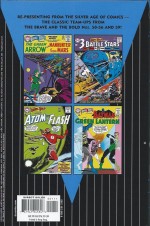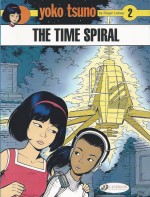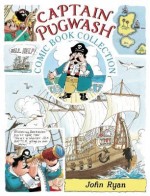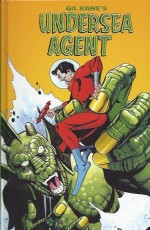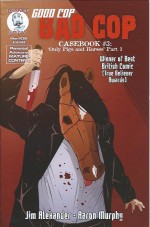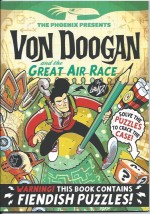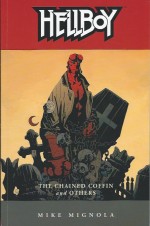
By Mike Mignola with James Sinclair, Matt Hollingsworth & Dave Stewart (Dark Horse Books)
ISBN: 978-1-59307-091-5
Hellboy is a creature of vast depth and innate mystery; a demonic baby summoned to Earth by Nazi occultists at the end of World War II before being intercepted and subsequently reared by parapsychologist Professor Trevor “Broom†Bruttenholm. After years of devoted intervention and education, in 1952 Hellboy began destroying unnatural threats and supernatural monsters as the lead agent for the Bureau for Paranormal Research and Defense.
This third epic collection gathers a number of shorter sagas: The Wolves of August originally serialised in Dark Horse Presents #88-91, Advance Comics/Hellboy: The Corpse and the Iron Shoes, Hellboy: Almost Colossus plus material from Dark Horse Presents 100 #2 and Hellboy: Christmas Special, communally spanning 1994-1997 and leads off with an enthusiastic appreciation from devoted fan P. Craig Russell in his Introduction. Mignola also offers directors’ notes on all the spooky stories contained herein…
The supernatural superstar was never conventional, especially in his publication schedule. Hellboy’s shorter adventures materialised in many different venues whilst his own title had the appearance of a succession of one-shots and limited series. Mignola, however, had a solid marketing plan from the start. The stories had an internal numbering system (if you’re that interested check it out on Wikipedia and leave them a donation while you’re at it) which allowed him to make stops back and forth along his proposed timeline and build years of continuity in mere months…
Thus this collection of brief, bold blockbusters opens with ‘The Corpse’ which first saw print in monochrome in Advance Comics catalog. Here an old Irish fairytale is expanded and remastered in full colour as Hellboy’s attempts to rescue a baby stolen by the Little People one night in 1959 results in the unlikely hero making a fool’s bargain.
All the graves are full but he must find a final and proper resting place for a very vocal cadaver before the sun rises…
The action-packed errand leads to confrontations with ghosts, devils and worse before our scarlet champion parks the body and gets back the bairn…
Immediately following is thematic epilogue ‘The Iron Shoes’ which rapidly relates another Celtic saga set two years later when Hellboy drags a goblin out of the holy site it’s defiling before laying it at the feet of Father Edward Kelly…
‘The Baba Yaga’ was created specially for this compilation and describes in dire detail how the legendary Russian witch lost her eye to Hellboy in their first confrontation. Thereafter, ‘A Christmas Underground’ (from 1997’s Hellboy: Christmas Special) offers eerie and ethereal miasmic horror in the best seasonal manner. England, Christmas Eve, 1989 and Hellboy is on a death-watch. Aged and ailing Mrs. Hatch talks of her long-lost baby girl Annie. Leaving her, the un-horned hero follows a trail to a graveyard and down beneath it. Soon he is attending a dark soiree to rescue the child, now the restless bride of a prince of the Pit. After a most brutal struggle Hellboy celebrates the nativity by setting two souls to rest…
In 1995 Dark Horse Presents 100 #2 debuted ‘The Chained Coffin’. Here Mignola has partially redrawn the tale and Dave Stewart has added colour to the story of Hellboy’s return to the English church where he first arrived on Earth in 1943. Fifty years of mystery have passed, but as the demon-hunter observes ghostly events replay before his eyes and learns the truth of his origins, Hellboy devoutly wishes he had never come back…
‘The Wolves of Saint August’ ran in Dark Horse Presents #88-91 during 1994 before being reworked a year later for the Hellboy one-shot of the same name. Set in 1994 it sees the red redeemer working with BPRD colleague Kate Corrigan, investigating the death of Hellboy’s old friend Father Kelly in the Balkan village of Griart. It’s not long before they realise the sleepy hamlet is a hidden den of great antiquity where a pack of mankind’s most infamous and iniquitous predators thrive…
Mignola has a sublime gift for setting mood and building tension with great economy. It always means that the inevitable confrontation between Good and Evil has plenty of room to unfold with capacious visceral intensity. This clash between unfrocked demon and alpha lycanthrope is one of the most unforgettable battle blockbusters ever seen…
The story-portion of this magnificent terror-tome concludes with the 2-part miniseries ‘Almost Colossus’ from 1997 wherein traumatised pyrokinetic BPRD agent Liz Sherman awaits test results.
During her mission to Castle Czege (Hellboy volume 2: Wake the Devil) her team uncovered a hidden alchemy lab with a stony homunculus inside. When she touched the artificial man Liz’s infernal energies rushed uncontrollably into the creature and brought it to life…
Now as her own gradually slips away, Hellboy and Corrigan are back in the legend-drenched region, watching a graveyard from which 68 bodies have been stolen…
Elsewhere the fiery homunculus is undergoing a strange experience: he has been abducted by his older “brother†who seeks through purloined flesh, blackest magic and forbidden crafts to perfect their centuries-dead creator’s techniques.
Before the curtain falls, Hellboy, aided by the ghosts of repentant monks and the younger homunculus, is forced to battle a metal giant determined to crown itself the God of Science and save the world if he can and Liz because he must…
Wrapping up the Grand Guignol show is another splendid and whimsical ‘Hellboy Gallery’, featuring stunning efforts from Kevin Nowlan, Matt Smith, Duncan Fegredo, Dave Johnson, Thierry Robin and B.C. Boyer…
Bombastic, lightning-paced, moody and astonishingly addictive, this will delight adventure and horror fans in equal amounts: an arcana of thrills and chills no comics fan should be without.
™ and © 1994, 1995, 1996, 1997, 1998 and 2003 Mike Mignola. Introduction © 1998 P. Craig Russell. Hellboy is ™ Mike Mignola. All rights reserved.

